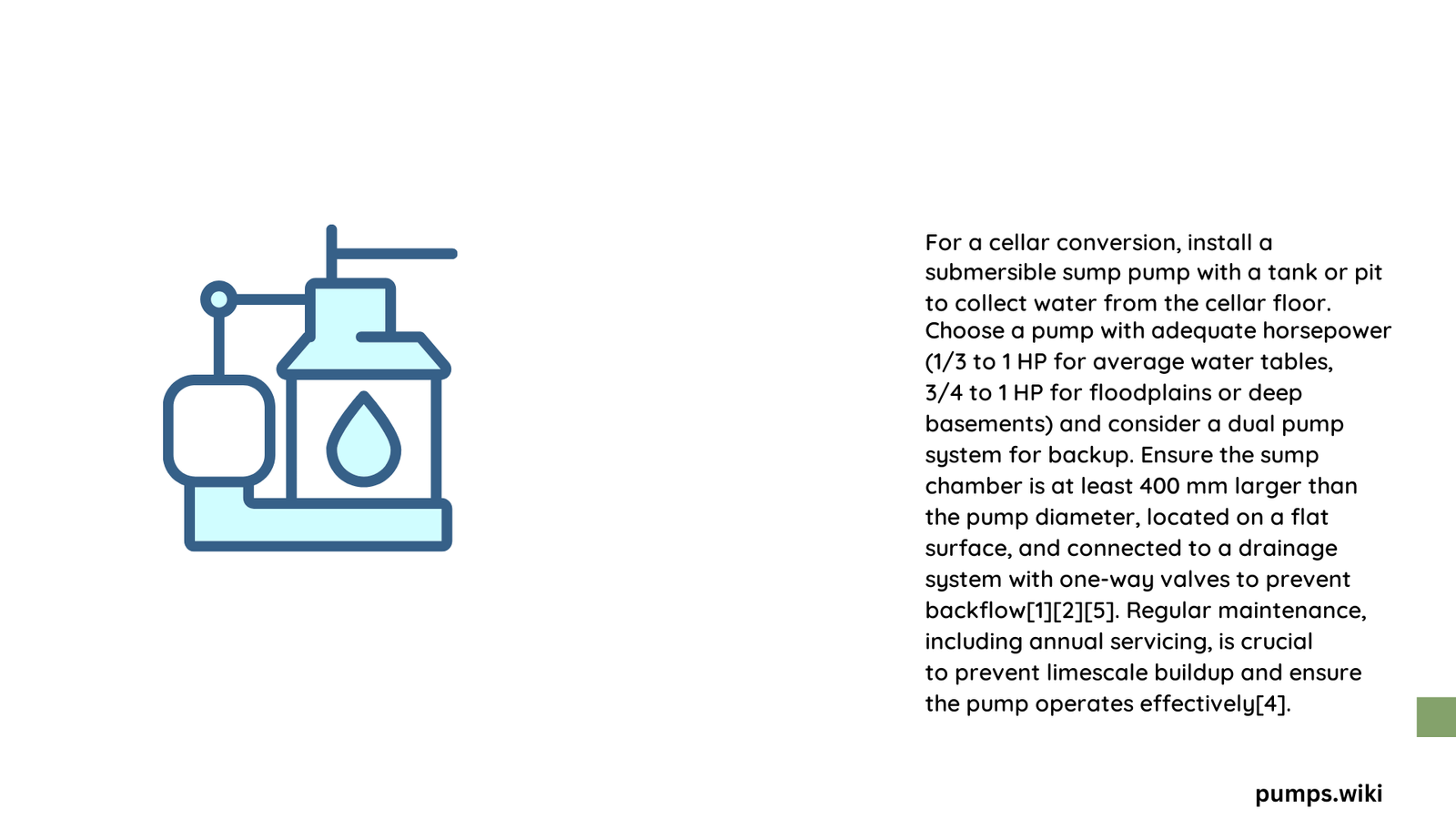Cellar conversion sump pump represents a critical infrastructure solution for homeowners seeking to protect their basement from water damage and moisture intrusion. This comprehensive guide explores the intricate process of selecting, installing, and maintaining an effective sump pump system that ensures your converted cellar remains dry, functional, and structurally sound, preventing potential water-related complications and preserving your property’s value.
What Makes Cellar Conversion Sump Pump Essential?
Water management in basement spaces requires strategic planning and robust technological intervention. A cellar conversion sump pump serves as the primary defense mechanism against groundwater infiltration, potential flooding, and moisture-related structural degradation.
Why Do You Need a Specialized Sump Pump?
Cellar conversion demands precise water management strategies due to unique architectural and geological challenges. Key reasons include:
- Groundwater Control: Prevents water accumulation beneath foundation levels
- Moisture Prevention: Reduces humidity and potential mold growth
- Structural Protection: Mitigates potential foundation damage
- Property Value Preservation: Maintains basement usability and integrity
How to Select the Right Sump Pump?

Capacity Considerations
| Pump Type | Capacity Range | Recommended Usage |
|---|---|---|
| Submersible | 2,000-4,000 GPH | Standard Residential Cellars |
| High-Capacity | 4,000-6,000 GPH | High Water Table Locations |
| Battery Backup | Matching Primary Pump | Emergency Scenarios |
What Factors Influence Pump Selection?
- Basement Square Footage
- Local Water Table Levels
- Soil Drainage Characteristics
- Historical Flooding Patterns
Step-by-Step Cellar Conversion Sump Pump Installation
What Tools Will You Require?
- Drill with 3/16-inch bit
- Plastic/fiberglass sump basin
- Wet/dry vacuum
- PVC primer and solvent
- Rubber coupling boot
- Adjustable pipe wrench
Detailed Installation Process
Location Selection
- Identify lowest basement point
- Proximity to electrical outlet
- Ensure adequate drainage slope
Pit Preparation
- Break concrete floor carefully
- Create wider excavation than sump chamber
- Add 2-4 inches gravel base
- Position sump liner strategically
Pump Placement
- Lower submersible pump onto gravel layer
- Connect discharge pipe with check valve
- Ensure proper electrical connections
Performance and Maintenance Strategies
How Often Should You Inspect?
- Annual Professional Inspection
- Quarterly Basic Maintenance
- Immediate Response to Performance Changes
Maintenance Checklist
- Clean sump basin
- Test float mechanism
- Inspect discharge pipes
- Verify electrical connections
- Check backup battery status
Cost and Investment Considerations
Budget Breakdown
- Basic Pump System: $500 – $1,000
- Professional Installation: $1,000 – $2,500
- Annual Maintenance: $100 – $300
Advanced Recommendations
Technology Integration
Modern cellar conversion sump pumps now offer:
– Wi-Fi connectivity
– Mobile alerts
– Real-time monitoring systems
– Smart diagnostic capabilities
Final Recommendations
Investing in a high-quality cellar conversion sump pump requires careful consideration of local environmental conditions, property characteristics, and long-term water management goals.
Pro Tips
- Always consult local drainage experts
- Consider multiple water management layers
- Prioritize professional installation
- Invest in reliable backup systems
References:
1. Sumps and Pumps
2. BASC.PNNL.GOV
3. Zoeller At Home
